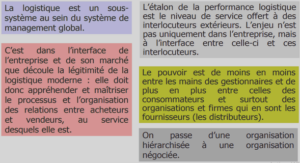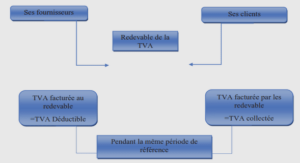Sampling protocol
Mingan Island Cetacean Study (MICS) collected blue whale sightings for the western North Atlantic since 1979. At the end of the season 2008, the blue whale photoidentification catalogue included a total of 430 individuals photographed predominantly within the GSL, but also from other areas su ch as the Scotian Shelf, the Gulf of Maine, and the West Greenland. In this study, only individuals observed within the GSL were considered (i.e., 333 individuals) . Since 1987, MICS sampling protocol and materials are relatively similar. Sampling strategy is neither random nor systematic. Field work is conducted aboard rigid-hulled inflatable boats and is weather dependant. Sea state (:S 4 on the Beaufort scale), wind speed (:S 20 knots), precipitation and fog (visibility of at least 3 nautical miles) are the limiting factors for a survey to be conducted. Spatial effort distribution is also weather dependant, mainly constrained by wind direction and strength. T
herefore the study area is not homogeneously covered. For each survey day, research vessels attempt to coyer the greatest possible area, passing more time where rorqual species (blue, humpback or fin whale) are encountered (Doniol-Valcroze, 2001). Each observation is associated to a picture that allows individual identification based on the animal’s pigmentation pattern (Katona and Whitehead, 1981; Agler et al., 1990; Sears et al. , 1990). The time and date, footprint coordinates (where the animal dove) , behaviour and group composition if any, complete the recorded information. As the whole GSL cannot be thoroughly studied, MICS conducts surveys in known whale aggregation areas. The principal study area, Mingan (hereafter referred as MING; see Figure 1.1) ranges from the Québec North Shore at the level of the Mingan Islands, including the Jacques Cartier Strait out to Anticosti Island and its westem shelfwaters. It is sampled every year from June to October inclusively (although few data were opportunistically collected during the rest of the year), and therefore benefits of the greatest coverage. The lower Estuary (ESTU) and the Gaspésie Peninsula (GASP) are only covered during the peak of blue whale abundance, from the end of August to the beginning of September, and from the end of June to the beginning of July, respectively. It is important to mention that, due to logistic reasons , these areas were not systematically studied every year. Sites of second importance were sporadically sampled, when blue whales were known to be there, or opportunistically. These zones include the Québec North Shore, between Sept-Îles and Pointe-des-Monts (SlPM) and the Northeast Gulf (NEGSL).
To increase the amount of information in areas where effort is limited, photoidentification data from non-MICS observers (other research stations, enterprises or private persons) have been included under the term « opportunistic » (OPP). Each sighting provided and accepted typically consisted of the whale’s picture with position and date, which enabled MICS staff to confinn the individual’s identity. Because these sources did not follow any precise protocol, sightings lacked useful information on spatial or temporal effort features , which made it difficult to standardize effort. For these sources of information, only the number of sighting days is available. The use of these OPP data adds infom1ation for two more regions of the GSL, Newfoundland (NFDL) and the southem Anticosti region (SANT), which have been poorly surveyed (Figure l.1). For the SANT region, the rare sightings are, unfortunately, impossible to identify on an individual basis. This zone has then been removed from the general analysis. For the Estuary exclusively, a third source of information is available. [n 2000 and 2001, a special MICS te am (named hereafter according to the leader’s initiais, CLB) was present in this area to study blue whale acoustics using a slightly diverging protocol than for regular MICS surveys. Consequently the three sighting sources (MICS , OPP and CLB) for the ESTU region coyer June through October inclusively, with varying intensity depending on the amount of opportunistic data available each year and the duration of MICS surveys. This study includes ail blue whale species’ observations (MICS and non-MICS) for ail the above mentioned zones from 1987 to 2007 inclusively (until 2008 for MING only). For the Mingan region only, humpback whale sightings were also included in the analyses. Because several data are not yet incorporated to the database, some analyses lacked specifie years or sighting sources (see in the analysis ‘ description and associated figures).
Effort analysis
Because a regular sampling protocol exists for the Mingan study area, an attempt was made to characterize the annual effort (e.g., is the effort constant between years?) even though both geographical and seasonal distributions of blue whales are biased due to the non-uniform observer efforts (see previous section). Temporal effort (1987 to 2006) was represented by 1) the total number of sampl ing days and 2) the total number of daily sighting hours on an annual basis (Figures 1.2A and B). Based on GPS positions, spatial effort (1987 to 2002) was estimated by 1) the tracks covered (in km) and 2) the area covered (in km2 ) on an annual basis (Figures 1.2e and 0). Ali these analyses present different limitations. The temporal daily effort considered each day equally, notwithstanding their duration, the area covered or the number of boats used. The number of boats is taken into account in ail other analyses because the total hours, tracks covered and area covered for each boat are pooled on a daily basis. This suggests that the spatial and temporal efforts of each boat are completely independent, which is not exactly true as boats travel jointly for a great part of the day. In order to limit this bias, the total area covered alU1Uall y was calcu lated.
A two nautical-mile buffer was added on each side of the daily tracks. The buffer length is based on a subjective estimate, but it gives a more accurate picture of the spatial effort. Despite ail these ad just ment s, none of the resulting ana lyses are rigorous enough to standardize the sampling effort, because numerous other biases are simp ly impossible to normalize. For example, the amount of time spent surveying versus the time allocated for photo-identification or the weather conditions influencing visibility and effectiveness of field-work, could both lead to possible missing of sorne individuals. Consequently, graphs in Figure 1.2 can only be regarded as guesstimates for effort representation. Ali the curves obtained present sorne interannual variations. The total number of sighting days varies between 55 and 85 days (mean: 67 ± 4 days) while the total number of daily sighting hours ranges from about 700 to 1 600 hours (mean: 996 ± 103 hours) (Figures 1.2A and B). Spatial effort also fluctuates from year to year, ranging between a recorded annual minimum coverage of 7000 km (mean: Il 928 ± 1 892 km) or 31 500 km2 (mean: 47 756 ± 4608 km2 ) and a maximum coverage of 20500 km or 63 550 km2 (Figures 1.2C and 0). Overall, there is no general trend of the annual sampling effort (spatial or temporal) over time, and, in the 2000s, only little annual fluctuations are observed.
Blue whales’ site aUend ance pattern s From 1987 to 2007, 333 different blue whales were photo-identified throughout the Gulf. Table 1. 1 summari zes the annual sightings of blue whales for ail zones. The Estuary is the region where the highest number of blue whales has been observed (845) and individually photo-identified (220) from 1987 to 2007. Despite a smaller sampling effort, more whales were seen in GASP and SlPM (221 and 153 observations respectively) and indi vidua ll y photo-identified (134 and 114 individuals, respectively), compared to MeNG (144 observations for 94 different individua ls). Maybe due to the weak sampling coverage, only few animaIs (five) were recorded for NFDL and NEGSL regions. The yearly tota l of different blue whales identified for the entire GSL varies greatly between years and ranges between 23 and 96 whales. No temporal trend can be depicted, a tendency that is probabl y the results of irregular spatial and temporal surveys. However, still recently, an important number of blue whales is still encountered throughout the GSL each year (Table 1.1). A high proportion of the animais that frequented the GSL appears to be nonexclusive to any specifie site, meaning that the y have been observed in more th an one zone (Figure 1.9). Except for the NEGSL-NFOL area, most individuals were seen at least in two different zones of the GSL. Hence, 70% of the animais observed in MING (66 whales), 64% in ESTU (L41 whales), 72% in GASP (97 whales), and 84% in SIPM (96 whales) are non-exclusive animais. Appendix 4 presents a detailed synthesis of the armual distribution of individual blue whales in the GSL. Data are subdivided in order to focus on the two main regions (MING and ESTU), as weil as on the individual’s site attendance patterns. Globally, whales can be divided between individuals that are recurrently observed (more than three years over the study period; « regular visitors ») in the GSL (ail areas together), and those rarely encountered (three years or less; « occasional visitors » also referred as transient animais). Also, sorne animais seem to prefer one specifie area (« exclusive animais ») while others explore many sectors (« cosmopolitan animais ») of the GSL. The following paragraphs describe in details these individual’s site attendance patterns of blue whales.
RÉSUMÉ |






